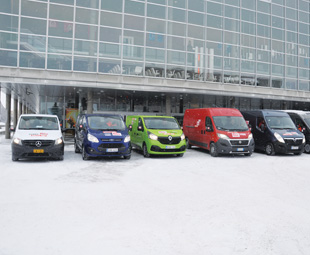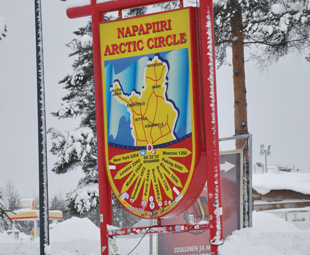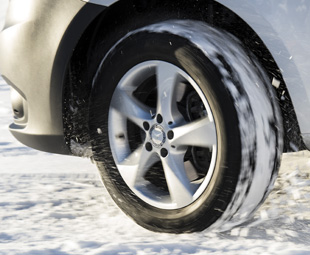A van test – in the Arctic

Seen as the top set of trials in Europe, the 2015 instalment of the annual Arctic Van Test has showed how similar modern competitor vehicles have become. JARLATH SWEENEY reports.
It was another extremely close competition between the contenders for the 22nd annual Arctic Van Test (AVT) in Finland. The legendary event is organised by Finland’s Auto Tekniikka ja Kuljetus publication. For the 2015 event, six panel vans were up for scrutiny. They were divided into two categories – one-tonne and 3,5-t gross vehicle mass.
Once again, there were three new vehicles. The new Fiat Professional Ducato was among the debutants alongside the new Mercedes-Benz Vito and Renault Trafic.
The Ducato was challenged by the Ford Transit and Opel Movano, while the Vito and trafic were up against the Ford Transit Custom.
The week-long test began with mechanical checks, and loading and fitting of recording equipment. The vans were then measured with regard to the functionality of their cargo space.
Members of the test team from Scandinavia and Central Europe began the driving element; measuring the turning circle of each vehicle, as the turning circle figures usually differ from those on manufacturers’ lists when driving on snow and with winter tyres.
The Opel Movano recorded the biggest difference to the manufacturer’s figure, while the Ford Transit Custom and Fiat Ducato were the closest.
Visibility counts
 Next up was the reversing test. Reversing is not only about rotating and handling; visibility plays a big part, especially when manoeuvring into a narrow street or gateway. Each large panel van in the AVT had side mirrors with a separate wide-angle section fitted.
Next up was the reversing test. Reversing is not only about rotating and handling; visibility plays a big part, especially when manoeuvring into a narrow street or gateway. Each large panel van in the AVT had side mirrors with a separate wide-angle section fitted.
Ford had the largest wide-angle mirror and the smallest basic version, so was the best in terms of helping the driver ascertain the van’s rearmost corners and even its rear tyres. The Fiat Ducato had smaller wide-angle mirrors. The driver was, however, able to improve the view with an electric control and, as a result, it scored the highest points in the test.
Despite smallish wide-angle mirrors, the Opel Movano provided a decent rear view, but, with its 4,3-m wheelbase, getting the van into tight corners was a little difficult.
In the one-tonne group, the Renault Trafic scored the most points, just ahead of the Ford Transit Custom. The Trafic’s side mirrors curved in three directions. In addition, its wide-angle mirror located in the passenger’s sun visor received much praise from the panel.
With its smaller, car-like mirrors, the Mercedes-Benz Vito faired the worst in the reversing test.
The overall visibility from within the vehicles was next on the list. The AVT has a very simple method of calculating this; called the Madeleine test, it measures how an average-height driver is able to observe surroundings from the vehicle’s windows and mirrors.
The one-metre-tall dummy (fitted to a sleigh) is moved in front of, and at the side of, the vehicle. After the driver adjusts the seat to find the perfect driving position, he then reports when the dummy gradually goes out of sight, which is then measured and recorded. After calculating the view from the glazed areas, the blind spots of the rear-view mirrors were then noted.
As on previous outings, Ford did well on this occasion with its two entrants achieving the best scores. The Mercedes-Benz Vito and Renault Trafic models were second and third, while the Fiat Ducato and Renault Movano took second position to the Transit in the bigger class.
While the Vito had the best frontal view, due to the shape of the bonnet, its side view could be better. The dimensions of the A-pillars of the Renault Trafic created a small blind spot at the front corner of the van.
The biggest blind spots were, however, found around the nose of the Fiat Ducato. While its overall view was among the best, its thick A-pillars and large mirrors block some vision on wide areas. The Madeleine test took place at Mäntsälä.
Easy driving
The city of Oulu was once again the location for the urban driving tests. Six members of the expert panel drove 25 km on a circular route to analyse the handling, performance and other characteristics of the vehicles. Also considered were accessibility of the cab, visibility and steering control.
 Competition was high in the one-tonne class. Ford and Mercedes-Benz offered the best access to the cabin, while the Vito got more points for front and side visibility.
Competition was high in the one-tonne class. Ford and Mercedes-Benz offered the best access to the cabin, while the Vito got more points for front and side visibility.
Renault impressed with the Trafic’s mobile office adaptability, and particularly with the high torque levels and gearing of its 1,6-litre dCi twin-turbo engine. According to the in-cab measurements, the Vito offered the lowest noise levels.
Passage through the cabin of the 3,5-t group was equally as good in each van. The Ford Transit’s excellent driving position, low engine noise and overall visibility were noted, while the Opel Movano’s ergonomics shone strongest.
The Ford’s complex dashboard was criticised, as it takes some time for the driver to get used to it. The panellists called it “button-jungle”. With regard to the load space behind the driver, the Movano was the top choice; items of up to four-metres long can be accommodated, thanks to the open section under the passenger’s seat.
Opel’s new 2,3-litre CDTi twin-turbo engine (from Renault) elevated the German brand into the lead in the city challenge. On the open road, the Vito’s driveability, as a result of its new front-wheel drive system, was rated best.
Another significant aspect of the test was the Traction Control Systems (TCS) and Electronic Stability Programs (ESP) offered by the various manufacturers. Although electronic safety systems have advanced in recent years, there is still room for improvement according to the judges. The driver has still to remain alert and not depend too much on the technology to get him out of trouble.
The Ford Transit Custom gained most points in the ice track tests at Pudasjärvi Airport. The Vito, with its front-wheel drive system, was almost as good, while Renault’s ESP system scored the least points. Fiat and Ford faired best in the bigger-sized van catagory. The Opel, like its Renault Alliance partner, needs to update its ESP system.
Close competition
With contrasting market strategies in practically every country in the European Union, a general point structure had to be agreed among the panel with regard to total cost of ownership (TCO).
 Price levels of spare parts, servicing, repairs and warranty programmes were all considered. Then, the variations in the annual motor tax, the fuel economy of the vehicles and insurance costs had to be included as well.
Price levels of spare parts, servicing, repairs and warranty programmes were all considered. Then, the variations in the annual motor tax, the fuel economy of the vehicles and insurance costs had to be included as well.
Fiat Professional has made the breakthrough in the large panel van (3,5 t) category. The race was extremely close with the Italian marque winning by just one point over the Ford (208 versus 207) and with the Opel a close third on 202 points.
The latest Ducato – an evolution of the previous model – features many innovative high-tech items and received much praise for its overall performance, especially its fuel economy and acceleration. Use of cabin space and number of storage areas, plus its adaptability to turn into a mobile office with folding seats, were well received.
For the first time ever, there was a tie between all three vans in the one-tonne segment. Out of the 240 total points, the Ford, Mercedes-Benz and Renault trio were each awarded 209 points. This indicates the similar technical direction in which the various manufacturers in the light commercial vehicle industry are heading.
Click to download the van test results.
Published by
Focus on Transport
focusmagsa



 !
Starting 1 April, every
!
Starting 1 April, every


 FUSO: Driving the Future of Mobile Healthc
FUSO: Driving the Future of Mobile Healthc



 A brand
A brand




 Wondering about the maximum legal load for a
Wondering about the maximum legal load for a 
 The MAN hTGX powered by a hydrogen combus
The MAN hTGX powered by a hydrogen combus


 Exciting News for South African Operators
Exciting News for South African Operators





